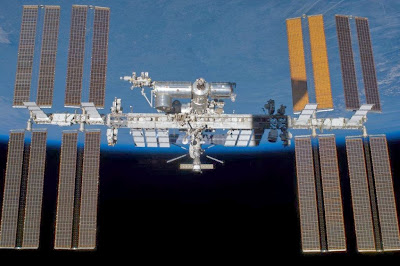NASA and Boeing managers have again extended the stay of Starliner at the International Space Station (ISS) this time into July, raising questions among more outspoken commentators as to whether its crew of two Butch Wilmore and Suni Williams will need to be offered an alternative means of returning to Earth.
It was revealed in a statement at the weekend that NASA wants more time for analysis to ensure helium leaks and faulty thruster are fully understood before risking the capsule’s first ever return flight with a crew.
The fact that the date has been pushed into July takes it closer to it’s 45-day on orbit limit following lift-off on 5 June. The return flight was originally scheduled for 14 June and then 26 June before the latest decision.
“Mission managers are evaluating future return opportunities which will follow the Space Station’s two planned spacewalks on June 24 and July 2,” said Steve Stich, NASA's commercial crew programme manager. “We are taking our time and following our standard mission management team process.”
The crewed test of the spacecraft, previously test-flown in space twice since 2019 without crew on board, has encountered five failures of its 28 manoeuvring thrusters, five leaks of helium gas meant to pressurize those thrusters, and a slow-moving propellant valve that signalled unfixed past issues.
The issues and the additional tests run by NASA and Boeing call into question when exactly Starliner's crew will be able to make the roughly six-hour return journey home, and in the process add to the programme's broader problems mand delays.
NASA wants Starliner to become a second US spacecraft capable of ferrying astronauts with the ISS and Boeing has already spent $1.5 billion in cost overruns beyond its $4.5-billion development contract.
Already running four years behind schedule, the Starliner crewed launch was a month later than planned due to minor problems with its Atlas 5 rocket, trouble with a countdown computer and because of an initial helium leak in the system used to pressurize the capsule’s thrusters.
NASA and Boeing managers decided the leak was too small to pose a safety threat and Starliner was cleared for launch but once in orbit further helium leaks developed and the Starliner’s flight computer took seven manoeuvring jets off-line when the telemetry did not match pre-launch expectations.
Starliner's undocking from the ISS and return to Earth is one of most complicated phases of its test mission. Most of the craft’s 28 thrusters are backups but at least 12 (six for control and six for backup) are required to meet flight safety rules.
NASA’s weekend update provided no further details but it is clear that managers were unhappy with all contingencies that Wilmore and Williams might encounter during a return flight to Earth, including safely undocking from the Space Station, manoeuvring away, performing a de-orbit burn, separating the crew capsule from the service module, and then flying through the atmosphere before landing under parachutes in a New Mexico desert.
It is not ideal that on such a high profile mission NASA is having to continue delaying the vehicle’s return. Officials have downplayed the overall seriousness of the situation saying Starliner is cleared to come home “in case of an emergency” though have not clarified why they are not ready to release Starliner to fly back to Earth with crew under "normal circumstances".
The situation has promoted many comments and much concern on social media, including some suggesting the Starliner crew is stranded in space. But this is far from true because in the event that NASA decided not to risk a crewed return flight they would have the option of commissioning a dedicated SpaceX Dragon mission to pick them up from the ISS.
Such a move would not look good from a PR perspective for either NASA or Boeing but it would be infinitely preferable to risking the lives of astronauts in a capsule returning to Earth with unresolved or uncertain technical issues.
# #
Editor's note: first published by ROOM Space Journal under heading 'NASA postpones Starliner's crew return amid thruster concerns' on Sunday, 23 June 2024.













